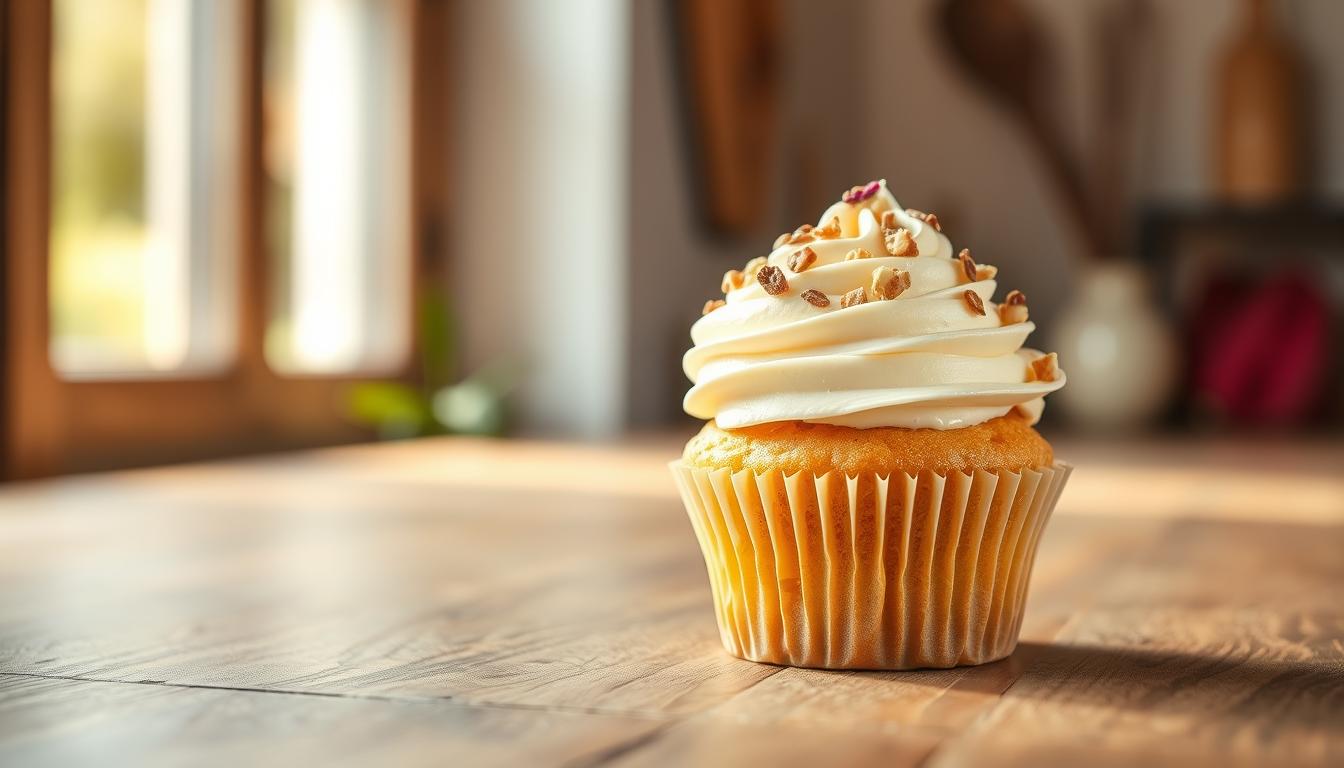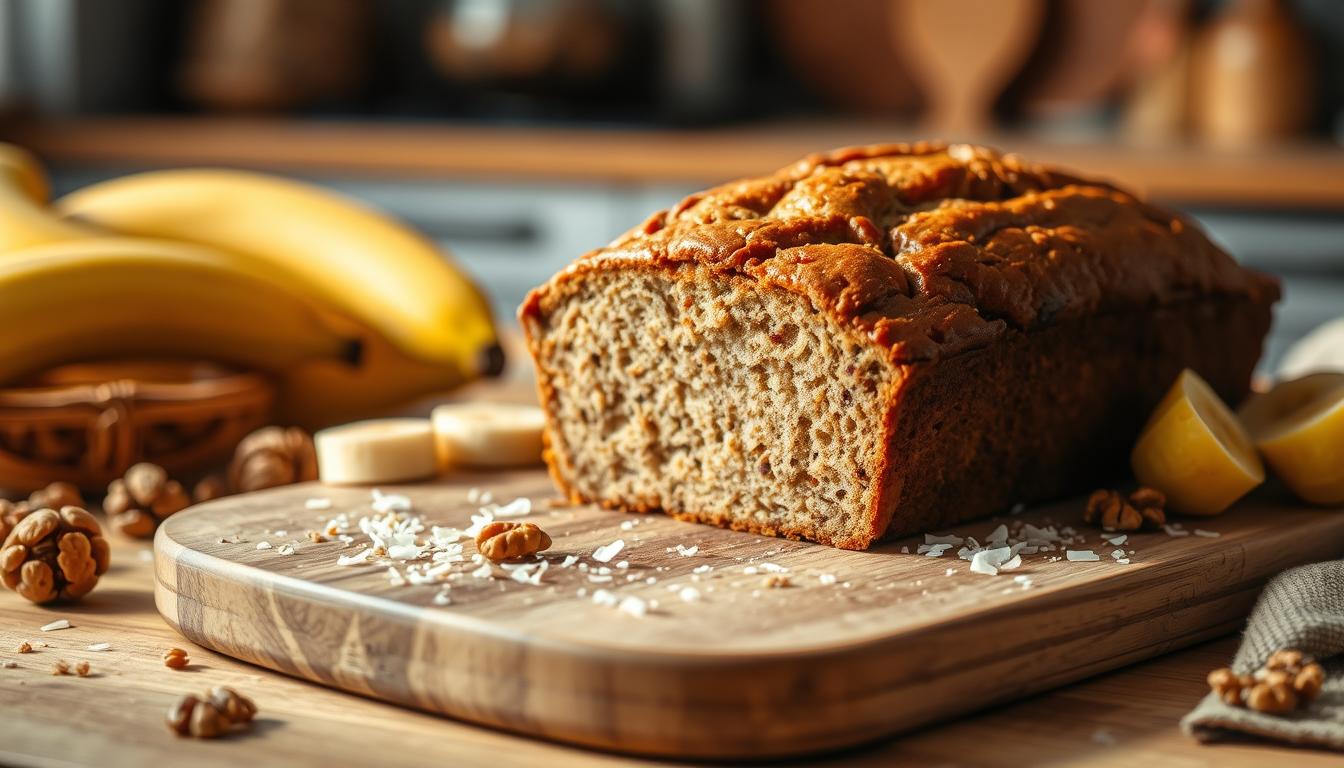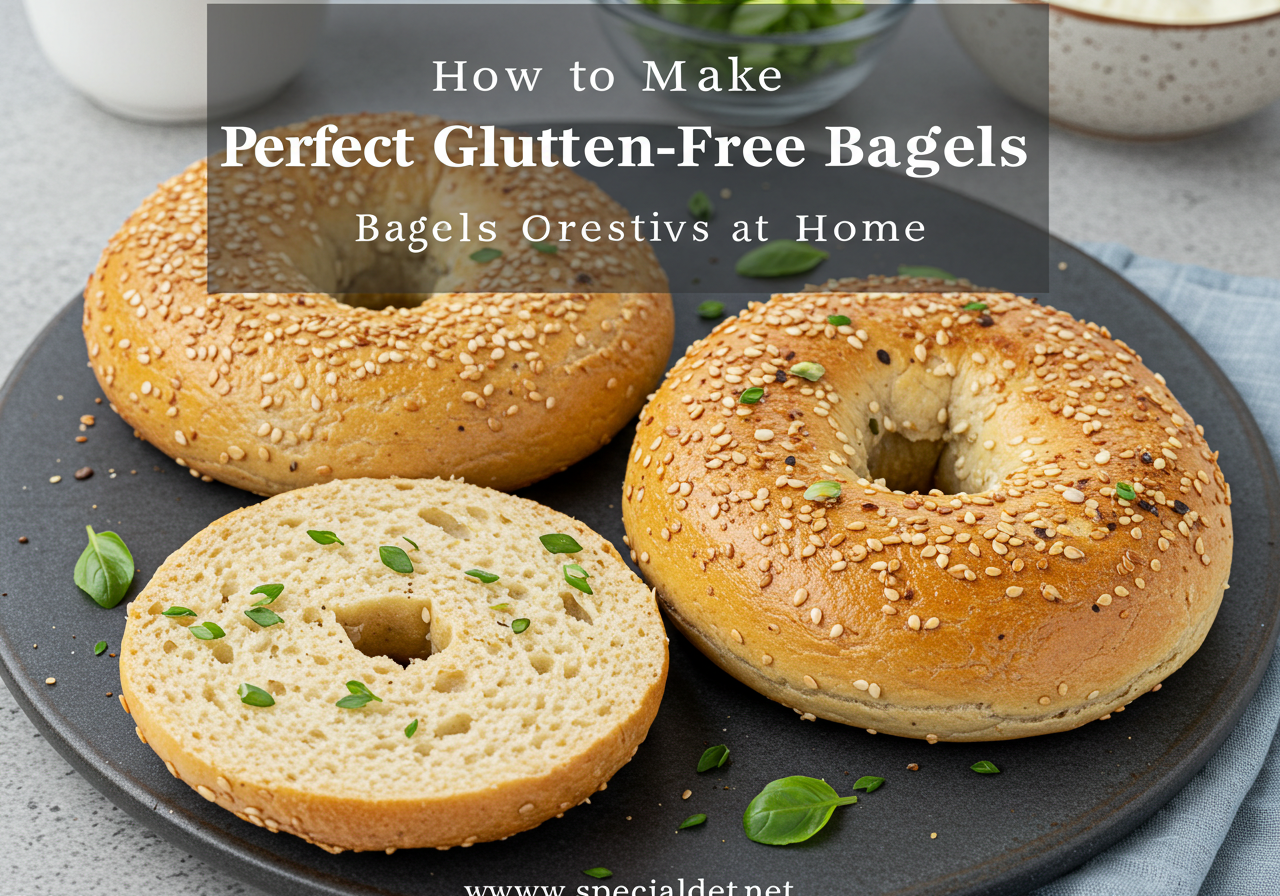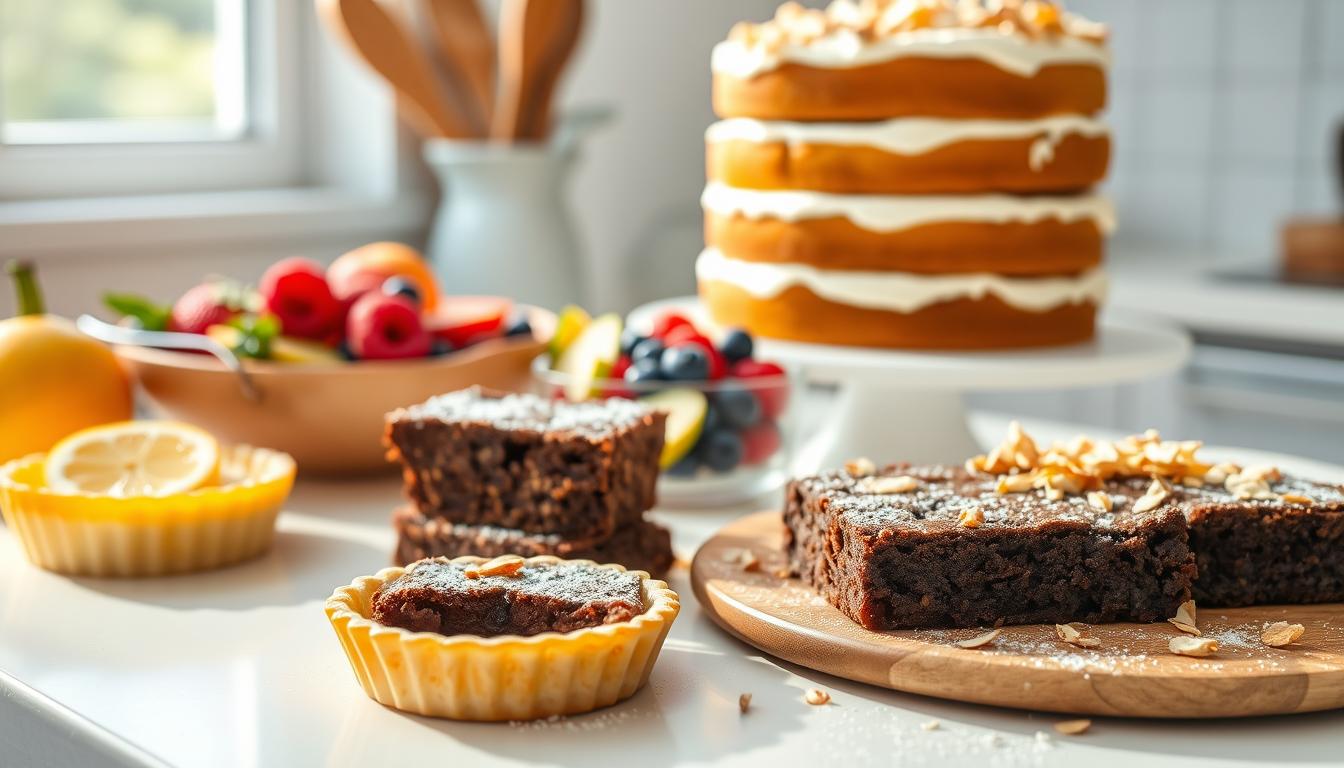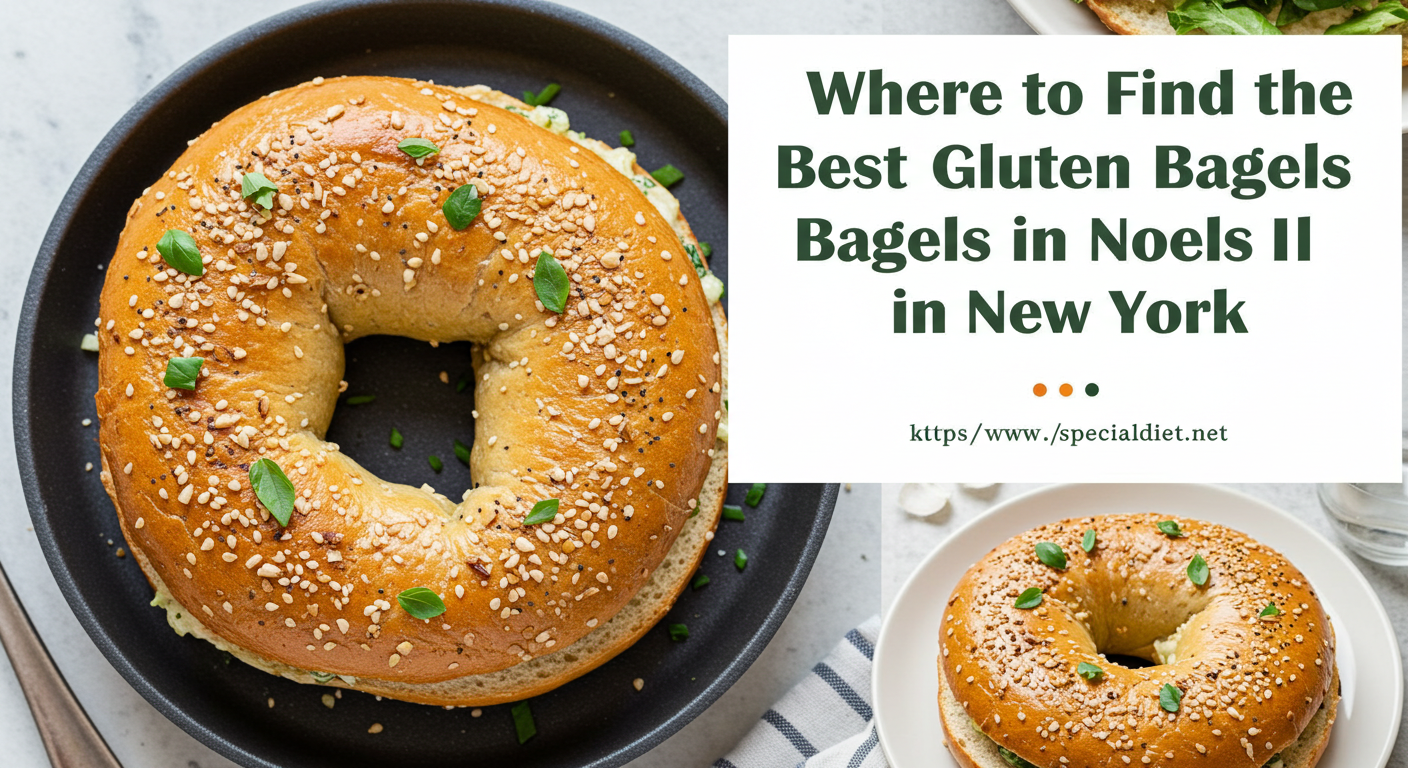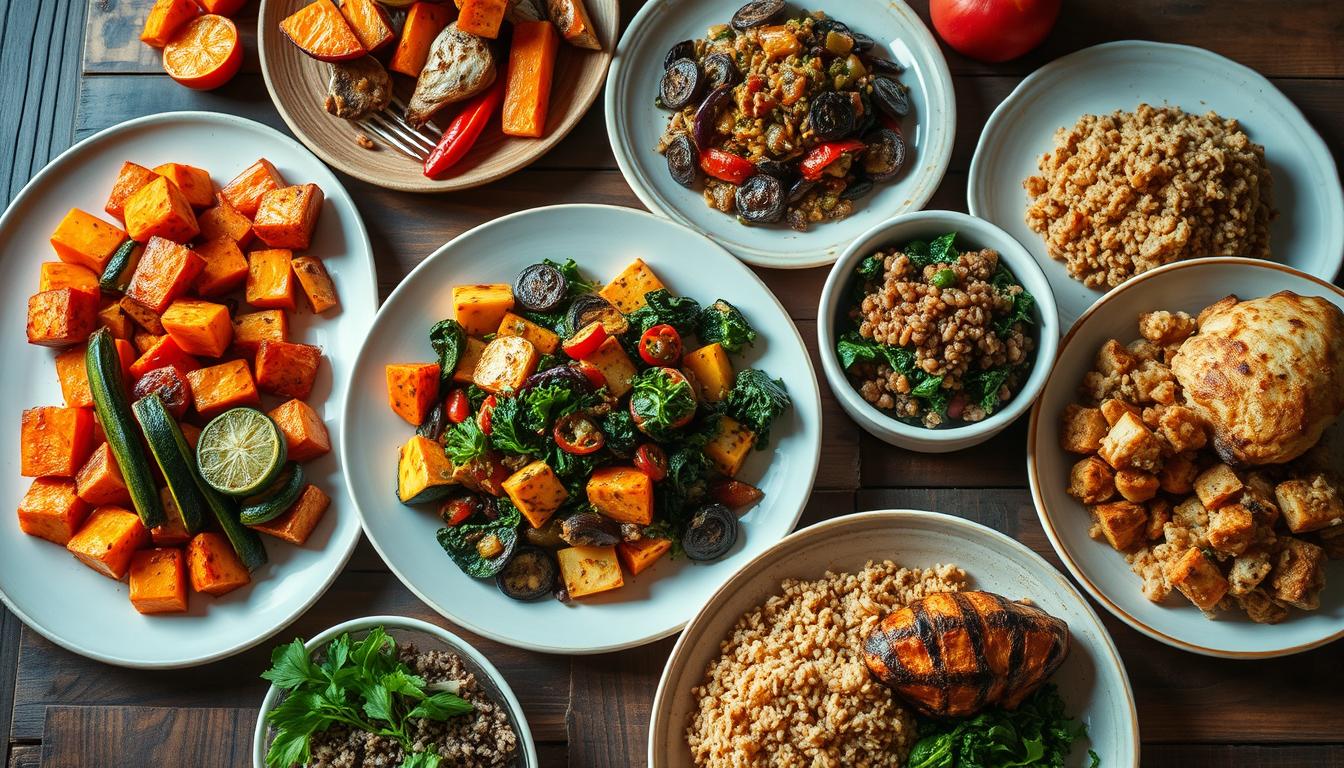Easy Gluten Free Cupcakes for Any Occasion
Imagine biting into a fluffy, golden-brown treat that melts in your mouth—no compromises on flavor or texture. Whether you’re celebrating a birthday, hosting a party, or simply craving something sweet, everyone deserves a dessert that feels indulgent yet inclusive. This recipe isn’t just about baking; it’s about creating moments everyone can enjoy.
After years of testing, we’ve perfected a method that balances simplicity with bakery-quality results. You’ll find everyday items like vegetable oil and granulated sugar in your pantry, paired with gluten-free flour and dairy-free milk for a base that’s both accessible and adaptable. A touch of vanilla extract adds warmth, while xanthan gum ensures your treats hold their shape without crumbling.
What makes this guide special? It’s designed for effortless success, whether you’re new to baking or a seasoned pro. You’ll learn how to achieve that moist, tender crumb everyone loves—no guesswork required. Plus, we’ve included tips later to troubleshoot common issues, so your creations turn out picture-perfect every time.
Key Takeaways
- Adaptable for birthdays, holidays, or casual gatherings
- Uses simple ingredients like gluten-free flour and dairy-free milk
- Years of refinement ensure a fluffy, moist texture
- Includes stability boosters like xanthan gum
- Step-by-step guidance for consistent results
- Practical advice for avoiding common baking pitfalls
Introduction to Gluten Free Cupcakes
Baking treats everyone can enjoy starts with the right ingredients. Traditional recipes often rely on wheat, but alternative flours like almond, rice, or oat create a base that’s safe for sensitive diets. The secret? Precision in measurements and mixing methods to avoid dense or crumbly results.
What Makes a Recipe Safe for Dietary Needs?
Removing wheat-based components is just the first step. Binders like xanthan gum mimic the elasticity that gluten provides. Veteran bakers recommend sifting flour blends twice for smoother batter. Here’s how popular substitutes compare:
| Flour Type | Texture Impact | Best For |
|---|---|---|
| Almond | Moist, dense crumb | Rich flavors |
| Rice | Light, airy | Vanilla or citrus |
| Oat | Chewy, hearty | Spiced recipes |
Creating Joy at Every Gathering
Birthdays, weddings, or casual get-togethers become more inclusive with desserts that cater to all. A recent survey found 82% of hosts noticed guests appreciated having allergy-friendly options. As one baker shared:
“When my batch comes clean with no crumbs left, I know I’ve nailed it.”
Up next, we’ll explore ingredient ratios, mixing tricks, and frosting pairings to elevate your creations. Stick to the steps, and you’ll master treats that delight without compromise.
Essential Ingredients for Gluten Free Cupcakes
Crafting delicious treats starts with selecting the right components for balance and flavor. Whether you’re whipping up a batch for a party or a quiet evening, precision in your pantry picks ensures light, moist results. Let’s break down what goes into creating desserts that satisfy without compromise.
Dry Ingredients & Flour Blend Essentials
Your base mixture sets the stage for texture. A store-bought or homemade flour blend (look for rice or oat varieties) provides structure. Combine it with baking powder for lift and a pinch of salt to enhance sweetness.
Pro tip: Always spoon flour into measuring cups and level—packing it down leads to dense results. Quality blends prevent grittiness and help your batter rise evenly.
Wet Components and Taste Enhancers
Eggs bind the batter while dairy-free milk keeps it tender. Vegetable oil adds moisture better than solid fats, and vanilla bean paste delivers intense aroma.
For frosting, blend powdered sugar with butter substitutes until creamy. A dash of almond extract can elevate simple buttercream. Natural flavorings like citrus zest or espresso powder work wonders too.
| Cupcake Ingredients | Frosting Ingredients |
|---|---|
| 1 ½ cups flour blend | 2 cups powdered sugar |
| 1 tsp baking powder | ¾ cup butter substitute |
| ½ tsp salt | 1 tsp vanilla extract |
| 2 large eggs | 2 tbsp dairy-free milk |
| ¾ cup dairy-free milk | |
| ⅓ cup vegetable oil | |
| 1 tbsp vanilla extract |
Choosing the Right Gluten Free Flour Blend
The foundation of any great baked good lies in its flour blend. Unlike traditional options, quality matters even more when avoiding wheat. A premium mix ensures your treats stay light without crumbling, while poor choices lead to gritty textures or uneven rises.
Importance of Xanthan Gum
Xanthan gum acts like glue in your batter. Since wheat-free blends lack natural binding agents, this additive mimics gluten’s elasticity. Brands like Bob’s Red Mill 1-to-1 Baking Flour include it pre-mixed, saving you guesswork. Without it, your creations might collapse or turn crumbly.
Measuring Techniques for Accuracy
Always spoon flour into your measuring cup and level it with a knife. Packing it down compacts the blend, leading to dense results. For consistent batches, use the same method every time—precision prevents dry or soggy textures.
| Brand | Xanthan Gum | Best For |
|---|---|---|
| Bob’s Red Mill | Included | Cookies, cakes |
| King Arthur | Add separately | Breads, pastries |
Stick to trusted blends labeled “1:1 substitute” for foolproof swaps. Check labels for rice or tapioca bases—they mimic wheat’s lightness better than nut flours. Pair these tips with careful measuring, and you’ll master tender, crowd-pleasing treats every time.
Mixing Techniques for Perfect Cupcake Batter
The secret to cloud-like texture lies in your mixing method. How you combine ingredients determines whether your treats rise like a dream or fall flat. Let’s break down the science behind achieving that airy crumb everyone loves.
Creaming Butter & Sugar for Extra Lift
Start with softened butter and granulated sugar in a large bowl. Use an electric mixer on medium speed for 3-4 minutes until the mix turns pale and fluffy. This process traps tiny air pockets, which expand during baking for a lighter texture.
Pro tip: Scrape the bowl’s sides every minute to ensure even blending. If the mixture looks gritty or separates, your butter might be too cold. Let it sit at room temperature for 10 minutes before trying again.
Avoiding Over-Mixing Pitfalls
Once you add dry ingredients, switch to low speed. Mix just until the batter becomes smooth—about 30 seconds. Overworking the blend activates excess starch, creating dense, gummy results. As one baker warns:
“Stop the mixer the moment you no longer see flour streaks. Trust the process—it’ll come together in the oven.”
| Mistake | Result | Fix |
|---|---|---|
| Mixing too fast | Collapsed centers | Use medium-low speed |
| Ignoring timers | Tough texture | Set a stopwatch |
| Skipping scraping | Uneven batter | Pause to fold manually |
For best results, follow recipe timings precisely. A stand mixer with a paddle attachment distributes heat evenly, preventing over-mixing. Remember: Gentle folds preserve the airiness you worked hard to create.
Step-by-Step Cupcake Baking Process
Transform your kitchen into a mini bakery with these foolproof steps. Precision and timing ensure golden domes and tender crumbs every time. Let’s dive into the essentials for flawless results.
Preparing Your Oven and Pan
Start by preheating your oven to 350°F. This stabilizes the heat for even baking. Line a 12-cup pan with parchment liners—avoid greasing them, as it causes uneven rising.
Timing, Temperature, and Batter Distribution
Use a ¼-cup scoop to fill liners ⅔ full. Overfilling leads to messy spills. Bake for 18-20 minutes. Rotate the pan halfway through if your oven has hot spots.
Check doneness by inserting a toothpick. If it comes out clean, they’re ready. Let treats cool in the pan for 5 minutes before moving to a wire rack. Rushing this step traps steam, making them soggy.
| Common Issue | Result | Solution |
|---|---|---|
| Uneven batter portions | Lopsided shapes | Use a measuring scoop |
| Oven not preheated | Dense texture | Wait 15 minutes after reaching temp |
| Ignoring cooling time | Soggy bottoms | Follow 5-minute rule |
Consistent oven temperature is key. Invest in an oven thermometer for accuracy. As one recipe developer notes:
“Your batter works hard—honor it with patience during cooling.”
Homemade Frosting Ideas and Tips
The right frosting transforms simple treats into showstoppers. Whether you prefer classic vanilla or crave rich chocolate, these recipes work for both dairy and allergy-friendly diets. Let’s explore techniques to achieve silky textures and professional finishes.
Vanilla Buttercream Variations
Start with softened butter or a plant-based substitute. Beat it in a mixing bowl for 2 minutes until creamy. Gradually add powdered sugar—1 cup at a time—to prevent clumps. A splash of dairy-free milk adjusts thickness without losing stability.
For depth, try vanilla bean paste instead of extract. One baker shares:
“Room-temperature ingredients are non-negotiable. Cold butter creates lumps, while overly warm mixes turn runny.”
Chocolate Buttercream Options
Melt high-quality dark chocolate and let it cool slightly. Blend it into your base buttercream for a decadent twist. Sift cocoa powder first to avoid grittiness. Use a stand mixer on medium-low speed to incorporate air without overworking the fats.
| Type | Key Ingredient | Texture Tip |
|---|---|---|
| Dairy-Free Vanilla | Vegan butter | Add 1 tsp cornstarch for stiffness |
| Classic Chocolate | Dutch-process cocoa | Whip for 4 minutes |
For flawless piping, fill your bag only halfway. Twist the top to control pressure, and practice swirls on parchment first. A crusting buttercream holds shapes best—ideal for intricate designs. Remember: patience and proper tools turn good frosting into greatness.
Dairy-Free Modifications in Cupcake Recipes
Adapting recipes to meet dietary needs doesn’t mean sacrificing taste or quality. With simple swaps, you can create treats that everyone enjoys. The key lies in choosing substitutes that mimic dairy’s role in texture and moisture.
Vegan butter and plant-based milks work seamlessly in most recipes. Opt for unsweetened almond, oat, or soy milk to avoid altering sweetness. For butter replacements, stick to brands with at least 80% fat content—this ensures proper creaming and structure.
Room temperature ingredients are critical. Cold vegan butter won’t blend smoothly, leading to lumpy batter. Let substitutes sit out for 30 minutes before mixing. As one baker advises:
“If your finger leaves a slight dent in the butter, it’s ready to use.”
| Dairy Ingredient | Substitute | Purpose |
|---|---|---|
| Butter | Vegan butter sticks | Provides fat for tenderness |
| Milk | Oat milk | Adds moisture |
| Buttermilk | Dairy-free milk + 1 tsp vinegar | Activates leavening agents |
| Yogurt | Coconut yogurt | Enhances moisture retention |
For recipes requiring buttermilk, mix 1 cup dairy-free milk with 1 tablespoon lemon juice. Let it curdle for 5 minutes before adding. This acidity helps activate baking soda, ensuring proper rise.
Results stay moist and flavorful when substitutions match measurements. No extra adjustments needed—just swap equal amounts. These changes keep your creations inclusive without compromising on indulgence.
Boosting Flavor with Natural Vanilla Extract
The difference between good and unforgettable baked goods often comes down to one key ingredient: vanilla. Its warm, aromatic notes elevate simple recipes into crowd-pleasing delights. Choosing the right type ensures your creations stand out with depth and complexity.
Vanilla Bean Paste vs. Pure Extract
Vanilla bean paste offers intense flavor with visible specks for visual appeal. Made from ground beans suspended in thick syrup, it adds richness to frostings and batters. Pure extract, while lighter, provides consistent results for everyday baking.
| Feature | Vanilla Bean Paste | Pure Extract | Best Use |
|---|---|---|---|
| Flavor Intensity | Bold, complex | Subtle, sweet | Paste for fillings |
| Texture Impact | Adds speckles | Clear blend | Extract for light cakes |
| Shelf Life | 12 months | 2+ years | Long-term storage |
When adjusting quantities, use 1 teaspoon of paste for every 2 teaspoons of extract. This maintains balance without overpowering other ingredients. As noted in a recent baking forum:
“Bean paste transformed my vanilla cupcake recipe—guests now ask for the secret every time.”
Experiment with blends to find your signature taste. Start with half the suggested amount, then adjust upward. Quality matters: opt for brands listing “vanilla beans” as the first ingredient. Your treats will taste professional, even with basic recipes.
Presentation and Decoration Suggestions
The final touch turns simple treats into memorable masterpieces. Visual appeal sets the stage for flavor, making every bite feel special. Creative details show care and elevate your dessert from homemade to professional-grade.
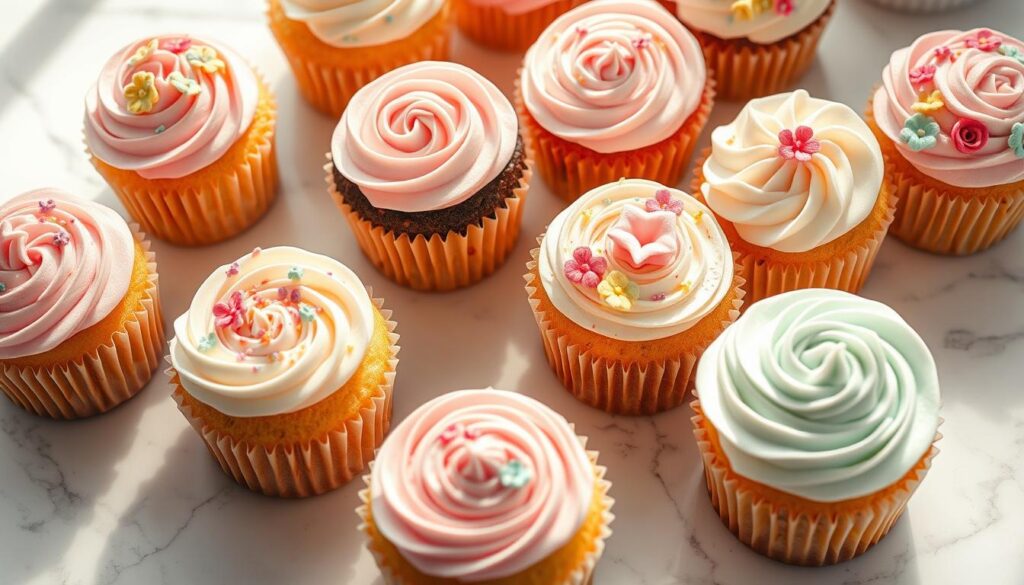
Creative Toppings and Sprinkles
Rainbow sprinkles add instant joy, while crushed freeze-dried fruit offers natural color. Match toppings to your theme—think mini chocolate shards for birthdays or edible flowers for garden parties. A baker once shared:
“Sprinkles aren’t just garnish—they’re tiny invitations to indulge.”
For holidays, try gold dust or shaped sugar pearls. Crushed nuts or toasted coconut add texture contrast. Keep a stocked pantry with versatile options:
- Metallic dragees for elegance
- Colorful sanding sugar for whimsy
- Dark chocolate curls for richness
Piping Techniques for a Professional Look
Use a star tip for classic swirls or a round tip for sleek domes. Fill your piping bag halfway and twist the top to control pressure. Start at the edge, pipe outward, then spiral inward for height.
| Tip Style | Effect | Best For |
|---|---|---|
| Open Star | Textured swirls | Birthdays |
| French Round | Smooth peaks | Weddings |
| Leaf | Rustic accents | Fall themes |
Let your treats cool completely before decorating. Warm surfaces melt buttercream, ruining crisp lines. Pair bold colors with neutral liners—pale pink frosting pops against charcoal wrappers.
Storing and Serving Your Cupcakes
How do you keep your baked goods fresh from the first day to the last bite? Proper storage methods make all the difference between a moist treat and a dry disappointment. Follow these guidelines to preserve texture and flavor, whether you’re saving leftovers or preparing ahead for an event.
Best Practices for Refrigeration and Freezing
Cool your treats completely on a wire rack before storing. This prevents condensation, which leads to soggy bottoms. For room temperature storage, use an airtight container lined with parchment—they’ll stay fresh for up to 2 days.
Need longer shelf life? Wrap unfrosted items individually in plastic, then place them in a freezer bag. They’ll keep for 3 months. Thaw overnight in the fridge, then bring to room temperature before serving.
Maintaining Moisture and Texture
Frosted creations require extra care. Store them in a single layer to avoid smudging decorations. If refrigerated, let them sit at room temperature for 30 minutes—this softens the frosting without compromising structure.
| Storage Method | Duration | Key Tip |
|---|---|---|
| Room Temperature | 2 days | Use wax paper between layers |
| Refrigerator | 1 week | Cover with dome lid |
| Freezer | 3 months | Label with date |
A seasoned baker notes:
“Your cooling rack is your best ally—it stops steam from turning crisp tops into mush.”
Avoid plastic wrap directly on frosting; it sticks and ruins smooth finishes. For optimal results, consume within the recommended time frames to balance freshness and flavor.
Troubleshooting Common Cupcake Issues
Even experienced bakers encounter challenges when perfecting their treats. Understanding why problems occur helps you fix them quickly and maintain consistent results. Let’s explore solutions for two frequent frustrations: collapsed centers and uneven rises.
Why Treats Sink After Baking
Over-mixing batter is the top culprit. Aggressive blending deflates air pockets needed for structure. Excess moisture—like adding too much milk—can also weigh down your mix. Always measure wet ingredients precisely using liquid cups.
Another factor? Expired baking powder. Test it by mixing ½ teaspoon with hot water. If it doesn’t bubble, replace it. As one baker notes:
“Timing matters. Open the oven too early, and your creations collapse from sudden temperature drops.”
Controlling Expansion During Baking
Overfilled liners cause batter to spill and rise unevenly. Use a cookie scoop for consistent portions—aim for ⅔ full. Oven temperature fluctuations lead to cracked tops. Preheat for 15 minutes and use a thermometer for accuracy.
| Issue | Cause | Fix |
|---|---|---|
| Sunken Centers | Over-mixed batter | Mix dry/wet separately |
| Domeless Tops | Low oven heat | Calibrate thermostat |
| Cracked Surfaces | Rapid temperature rise | Bake middle rack |
For gluten-free blends, ensure xanthan gum is included. It stabilizes the structure, preventing crumbles. Sift dry ingredients twice to avoid clumps that disrupt rising. Small tweaks—like reducing sugar by 1 tablespoon—can balance moisture levels.
Time-Saving Tips for Busy Bakers
Mastering the art of baking doesn’t require endless hours—just smart strategies. Streamline your prep and bake times with these practical solutions that maintain quality while cutting kitchen chaos. Let’s explore how small adjustments can yield big results.
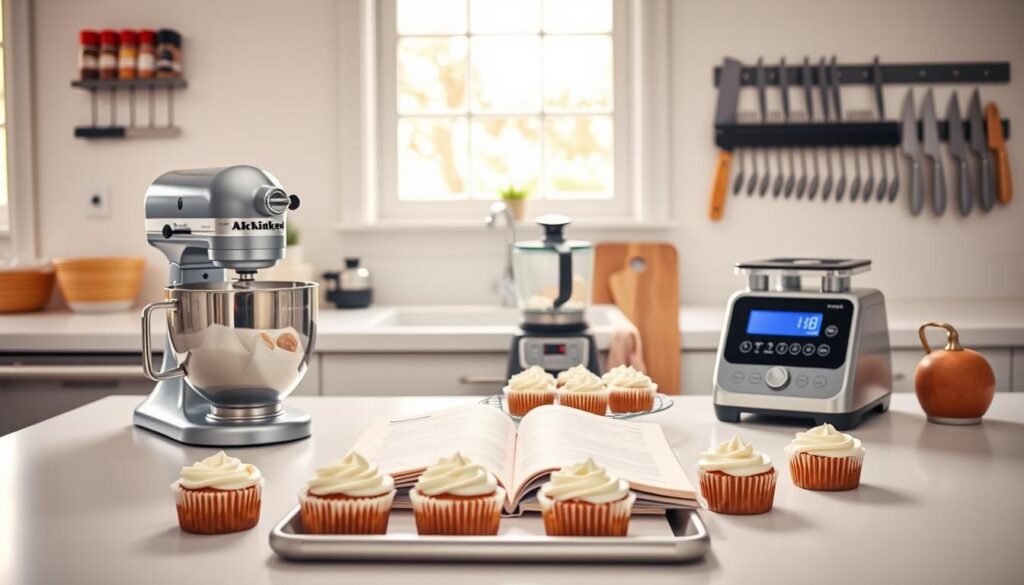
Efficient Mixing Methods
Start by pre-measuring all ingredients before touching your bowl. This “mise en place” approach eliminates mid-recipe scrambles. Use an electric mixer with dual beaters to cream butter and sugar in half the time. As one professional notes:
“Organized stations prevent over-mixing—you’ll know exactly when your batter comes clean from the sides.”
For multi-batch recipes, mix dry ingredients in bulk and store them in labeled jars. This lets you grab-and-go for future baking sessions.
Optimizing Oven Usage
Preheat your oven while preparing the batter—it reaches ideal temperature just as you finish. Bake two trays simultaneously using middle and lower racks, rotating them halfway. Invest in silicone mats instead of parchment paper; they wipe clean instantly.
| Strategy | Time Saved | Best For |
|---|---|---|
| Batch Measuring | 15 minutes | Weekly meal prep |
| Multi-Rack Baking | 25 minutes | Large gatherings |
| Tool Organizers | 10 minutes/search | Small kitchens |
Keep a spray bottle nearby for quick counter wipe-downs between steps. These tips help you make recipes faster without sacrificing that homemade touch.
Wrap Up Your Gluten Free Cupcake Journey
You’ve now got everything needed to craft bakery-worthy treats that delight everyone. From selecting quality ingredients to mastering mixing techniques, each step builds toward that perfect crumb. Remember: precise measurements and proper oven prep ensure consistent results every time.
Don’t hesitate to experiment. Swap vanilla bean paste for extract in frostings, or try nut-free milk blends. Your creations can reflect personal flair while staying true to the recipe’s core principles. Troubleshooting tips help fix issues quickly, so even first attempts shine.
Share your successes with friends or online communities passionate about inclusive baking. Whether adjusting buttercream textures or testing new flour blends, your journey inspires others. Ready to begin? Gather your bowls, preheat the oven, and let confidence guide you.
Every bite celebrates care and creativity. Now’s the time to make memories—one delicious batch at a time.

